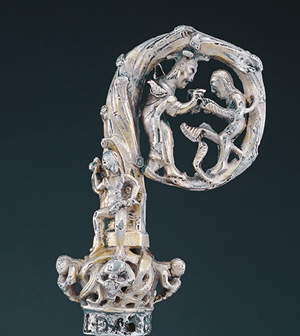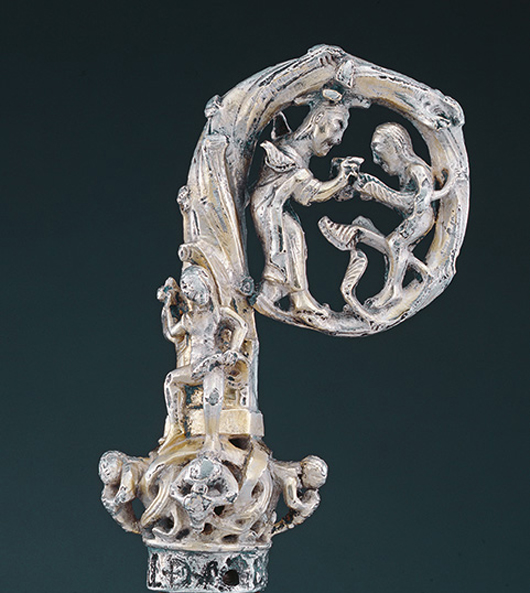
NEW YORK – Germany’s Hildesheim Cathedral in Lower Saxony has one of the most complete surviving ensembles of ecclesiastical furnishings and treasures in Europe, including many medieval masterpieces made between about 1000 and 1250. The cathedral was designated a UNESCO world cultural heritage site in 1985. Major renovations that are currently underway provide the opportunity for “Medieval Treasures from Hildesheim”—an extraordinary selection of about 50 medieval church treasures, most of which have never been shown outside Europe—to travel to the Metropolitan Museum of Art, where they will be on view beginning Sept. 17.
The first section of the exhibition will focus primarily on the legacy of Bishop Bernward of Hildesheim (960–1022), one of the greatest patrons of the arts in the Middle Ages. During his time, Hildesheim was a center for bronze-making and other artistic activities. In addition to the famous monumental bronze doors and the column in Hildesheim Cathedral that cannot travel, Bernward commissioned many smaller precious works of art, mostly for his Benedictine monastic foundation. These include the Golden Madonna, a silver crucifix, a pair of richly decorated silver candlesticks and sumptuously illuminated manuscripts, all of which will be included in the exhibition. The monumental life-size wood carving known as the Ringelheim crucifix is one of the earliest surviving three-dimensional sculptures of the Middle Ages. It will provide a focal point for the gallery, which will contain one of the most impressive groups of 11th-century works of art ever seen in North America.
The exhibition will also examine the continuing artistic production of Hildesheim in the high Middle Ages. Opulent jeweled crosses, as well as reliquaries and portable altars decorated with enamel and ivory will be featured. The late-12th-century St. Oswald reliquary surmounted by a silver-gilt bust of the saint and decorated with finely drawn niello plaques is a highlight as are the three gilt-bronze liturgical fans with openwork decoration and cabochon stones, each over 16 inches in diameter.
Hildesheim re-emerged as a major center for bronze casting in the early 13th century. The cathedral’s monumental bronze baptismal font from that time will be the centerpiece of a group of objects that includes a cast bronze eagle lectern, a lion aquamanile, a candlestick and a crozier (a religious staff of office, in the shape of a shepherd’s crook). The baptismal font, dating to about 1226, is one of the most important works to survive from the Middle Ages. The basin and its lid rest on free-standing kneeling figures of the four Rivers of Paradise and the complete ensemble measures 6 feet in height. Richly decorated in relief, the basin depicts the Baptism of Christ and the Virgin Enthroned flanked by scenes from the Hebrew Bible that were understood in the Middle Ages to prefigure the Baptism of Christ. The lid has four additional scenes in relief, and ancillary figures and lengthy inscriptions further enrich the font.
The exhibition will be accompanied by a fully illustrated catalog written by scholars on the museum’s staff in collaboration with scholars in France and Germany. This first comprehensive overview of the Hildesheim collection in English is published by the Metropolitan Museum and distributed by Yale University Press, and will be available in the museum’s book shops ($24.95, hardcover).
Among the education programs organized in conjunction with the exhibition will be a series of gallery talks and a “How Did They Do That?” weekend program for all ages. On Oct. 6, a “Sunday at the Met” program includes the showing of a film on the creation of a bronze aquamanile, followed by a discussion by Peter Dandridge, conservator, Sherman Fairchild Center for Objects Conservation at the Metropolitan Museum, and Ubaldo Vitale, renowned metalsmith and 2011 MacArthur Foundation Fellow. The conversation will focus on the baptismal font, eagle lectern, and other major cast works from Hildesheim within the context of medieval metal casting.
The exhibition will be featured on the website of the Metropolitan Museum (www.metmuseum.org).
ADDITIONAL IMAGE OF NOTE


